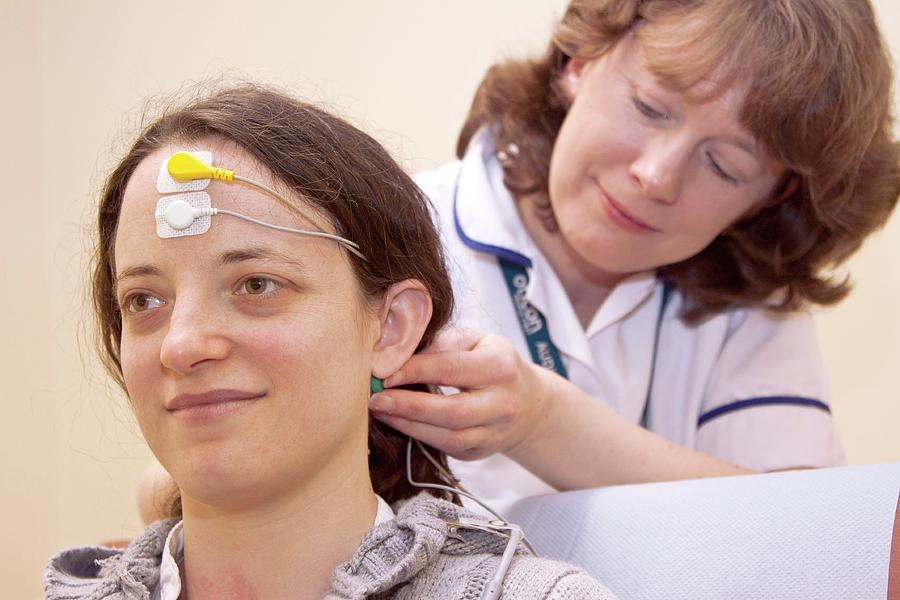

The appointment length is typically two hours, but the time needed to complete testing will depend on many factors, including how well your baby sleeps. Any movement, such as sucking or eye blinking will interfere with the audiologist’s ability to interpret responses and complete testing. Sounds will be played through the earphones and the computer will record the hearing nerve’s response to the sounds in each ear. The results for the speech-ABR, as opposed to click-ABR, suggest a rather asymmetric auditory brainstem processing for speech acoustic components in older adults. Once your baby is asleep, small foam earphones will be placed in the ears and the sensors will be attached to the audiologist’s computer. If you would like, you can hold your baby throughout the test procedure. Auditory Evoked Potentials (AEPs) are not measures of hearing per se. At this time, lights will be dimmed and you will be given time to feed/soothe your baby so he/she can go to sleep. AUDITORY BRAINSTEM RESPONSE (ABR) IN CLINICAL PRACTICE.
Auditory brainstem response skin#
The skin on your baby’s forehead and behind each ear will be cleaned and small sticker sensors will be placed. The Auditory Brainstem Response: Still an Important Tool for Neurodiagnostics With Greg Noel, AuD, Aud (C) Angela Ryan, MSc Steve Aiken, PhD The auditory brainstem response (ABR) in humans was first reported by Jewitt and colleagues in 1970, 1 with reports of assessing brainstem integrity following shortly afterwards. Once you arrive at the Department of Audiology at Children's Hospital of Philadelphia (CHOP), the audiologist will bring you and your baby to a quiet room where the testing will be performed.

All 50 states, the District of Columbia and Puerto Rico have newborn hearing screening programs. An ABR is not a hearing test itself, but it can be used to. Nearly every baby born in a hospital in the United States is screened for hearing loss before leaving the hospital. An auditory brainstem response (ABR) test measures auditory nerve reactions in response to sounds.


 0 kommentar(er)
0 kommentar(er)
